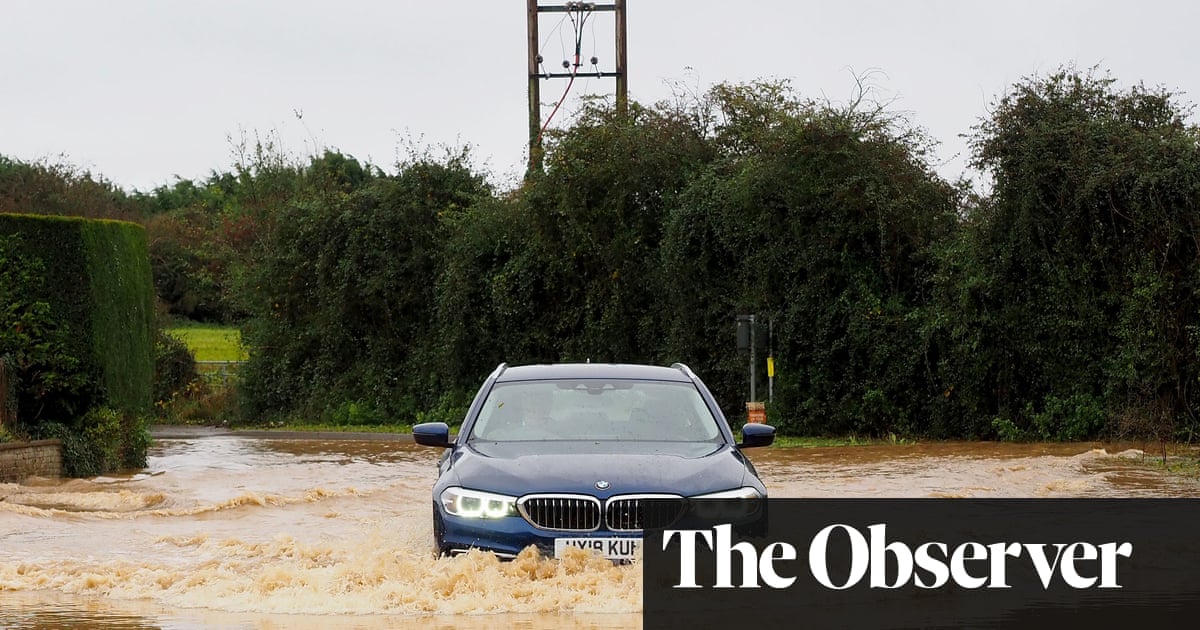
Thousands of flood defences in England that are supposed to protect properties from serious damage are in a state of disrepair, according to official figures leaked to the Observer before what is expected to be a wetter than usual autumn.
Data from inside the Department for Environment, Food and Rural Affairs and the Environment Agency about the so-called “asset condition” of key flood defences shows the proportion of those regarded as being in adequate condition now stands at just 92.6%, compared with 97.9% in 2018-19. This is the proportion of defences judged to be fit for purpose after rigorous inspection by experts.
Government sources said this was “significantly below” the optimal level of 98%. The Environment Agency has said that approximately 5.7m properties in England are at risk of flooding, a figure that increased by about 500,000 between 2021-22 and 2022-23 alone. According to officials, a 1% decrease in the overall proportion of flood defences found to be in adequate condition across the country puts an additional 10,000 properties at risk.
The figures have raised serious concerns in Whitehall amid forecasts from the Met Office which show an increased likelihood of a wetter than average autumn in 2024.
Last week, ministers in the Labour government convened the first meeting of their new floods resilience taskforce, chaired by the environment secretary, Steve Reed, to bolster the development of flood defences and improve the nation’s resilience to extreme weather. The group discussed plans to speed up and coordinate flooding preparation and resilience between central government, local authorities and community responders, and emergency services.
Reed and the floods minister, Emma Hardy, met representatives from the environment and housing departments, the Home Office, the Cabinet Office, the Environment Agency, the Met Office, local resilience forums, mayoral offices, emergency responders and the National Farmers’ Union, among others, to discuss their plans.
During the meeting, the Met Office confirmed that there was an increased probability of a wetter than average winter floods season. The ground will be waterlogged and rivers swollen after a wet September. At this point in the month, many areas have already received 100% of their average September rainfall, and October is forecast to be similarly wet.
Last year and early this year, floods struck large swathes of the country, and farming was particularly badly affected. As climate breakdown worsens, experts have said that extreme weather, including heavy rainfall and floods, will become more likely in the UK. Cuts to public spending have also left the UK vulnerable, with many flood defences in disrepair. The government has not said whether it will increase the flood resilience budget.
Reed told the meeting: “I’ve made clear that protecting communities from flooding is one of my top five priorities – with preparedness and resilience for this autumn and winter the clear focus for today’s meeting.”
Labour is blaming the Tory government for failing to act to bolster the defences over 14 years. Reed said: “Flooding devastates communities and businesses across the country. The previous Conservative government was too chaotic and distracted to learn the lessons of the past and protect communities before disaster strikes.
after newsletter promotion
“Labour is acting now to speed up the building of flood defences and bolster our emergency response. Unlike the Conservatives, we won’t let communities down.”
The Environment Agency told last week’s meeting it had conducted 170,000 checks on the state of assets in the past year – up from 100,000 in an average year. It has also increased its spending on asset maintenance and repair to £236m, up from £200m.
Source: theguardian.com


















